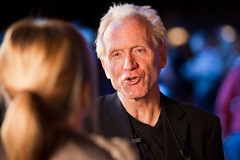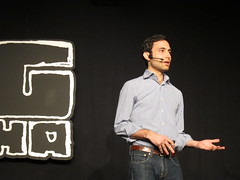 Image via Wikipedia
Image via WikipediaI'm sure you've had those "Eureka" moments on the web when you ran across the article that explained everything. Well, as head of the Reverse Auction Research Center (http://reverseauctionresearch.blogspot.com/), mine came in my email this morning. I was forwarded this article from a friend at a client firm, and initially, I wondered about it since the title didn't quite fit the scope of my "Google Alerts." The article on "Why Even Great Payments Ideas Crash and Burn" was written by David S. Evans, and you can read the entire article from pymnts.com by clicking on the link below:
In this article, Evans frames his thesis around the release of the movie about the early days of Facebook, "The Social Network" (OK, we both know a thing or two about search engine optimization now!). Yes, you can see the trailer below:
OK, the real point of Evans' article was this - every entrepreneur who has succeeded in the tech field - from Mark Zuckerberg to Bill Gates - was not the only one with "the" great idea. Others were in competition with them, like the hundreds of folks trying to develop and hawk operating systems, but it was Bill Gates and Microsoft that emerged with the dominant platform. Why? here's the genius moment! Evans observed that:
"Entrepreneurs with 'great ideas' for multi-sided platforms routinely fail because they haven't figured out how to reach critical mass.
And yes, solving the problem of getting to critical mass, the "chicken or the egg," or as Evans framed it in an earlier article an "Ignition Strategy" (Read it at http://www.pymnts.com/why-every-payments-product-needs-an-ignition-strategy/) is the key to success.
Now as you know, I've been tracking, researching, consulting, teaching in the area of B2B exchanges and reverse auction marketplaces for a decade. I wrote what is still one of the most cited reports on B2B exchanges ("The Auction Model" - http://www.businessofgovernment.org/report/auction-model-how-public-sector-can-leverage-power-e-commerce-through-dynamic-pricing). However, Evans concisely summed-up this decade of the rise, fall, and plateauing of the exchange marketplace in a single paragraph, writing:
The B2B exchanges that sprouted up by the hundreds in the late 1990s and underwent mass extinction in the early 2000s are the other interesting example of failed ignition strategies. The B2B proposition sounded like a great idea: provide buyers and sellers a convenient internet-based place to find each other and transact. The entrepreneurs behind these exchanges almost all failed to work through a sensible ignition strategy for reaching critical mass. An exchange can attract sellers only if there are enough buyers to do business with and can attract buyers only there are enough sellers to do business with. Critical mass refers to having enough buyers and sellers to satisfy each other's needs. Otherwise the market is "too thin" and not enough value is generated. This sounds simple but in fact in practice it is hard to get sellers to sign on to an exchange: these exchanges emphasized the use of auction methods to get the best price for buyers, but for sellers, that meant getting their prices competed down. The few surviving B2B transaction networks eventually discovered that they had to bring suppliers on for free at least initially. Most learned that lesson way to late. The failures had adopted the wet match approach to ignition: open the platform and assume that people will come.
So, in a nutshell, to succeed in this marketplace, as companies like FedBid (http://www.fedbid.com/) are doing today, while the hundreds of other exchanges have fallen by the wayside, it is due to the fact that they are not falling into the "Field of Dreams" trap ("If you build it, he will come").
The leaders in B2B today are creating value by opening up the marketplace, not charging admission up front. In doing so, they are following the path other tech firms have followed in having the best ignition strategy to get to critical mass - and beyond - to create value for both sides of the marketplace.
David
P.S. And BTW, "The Social Network" is getting great reviews! See:
++++++++++++++++++++++
++++++++++++++++++++++











